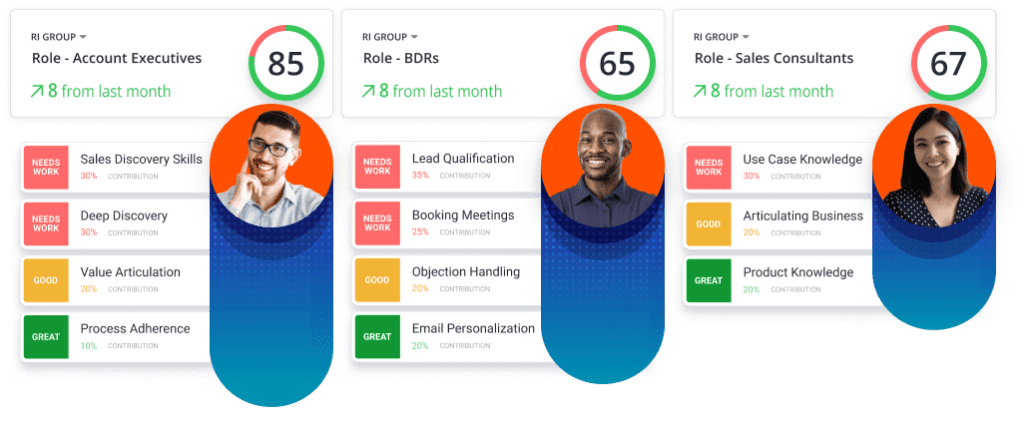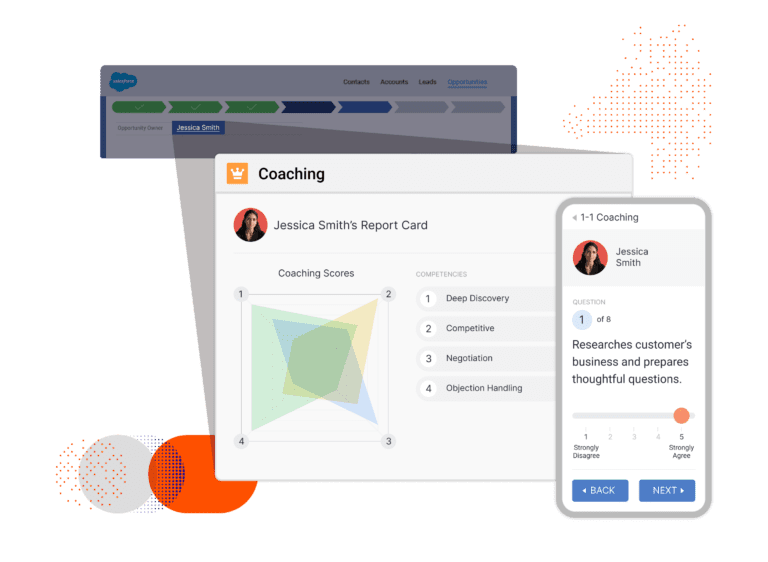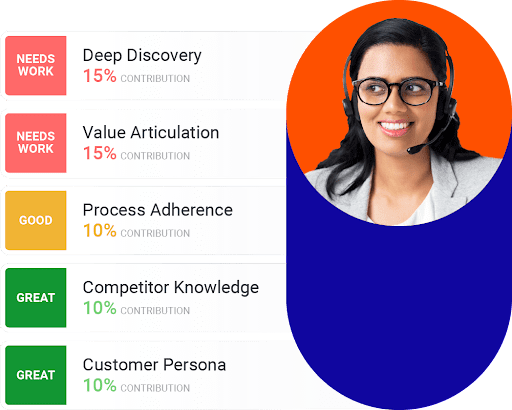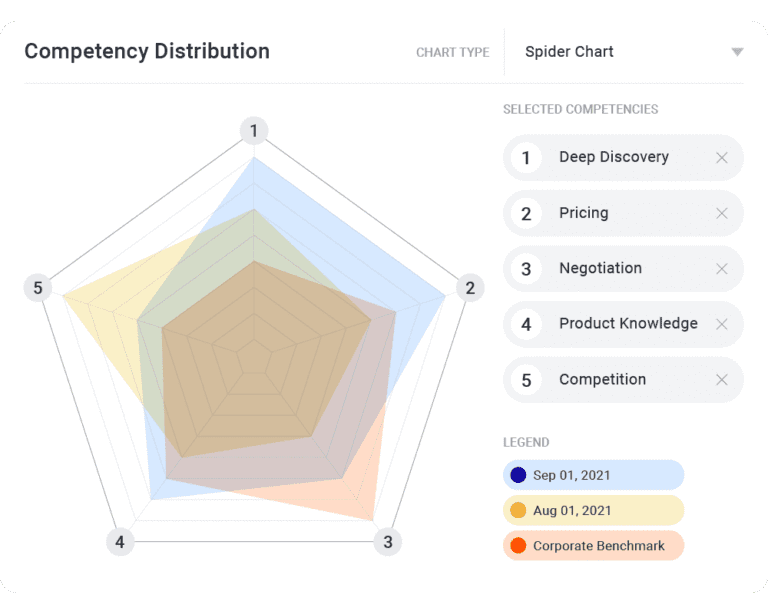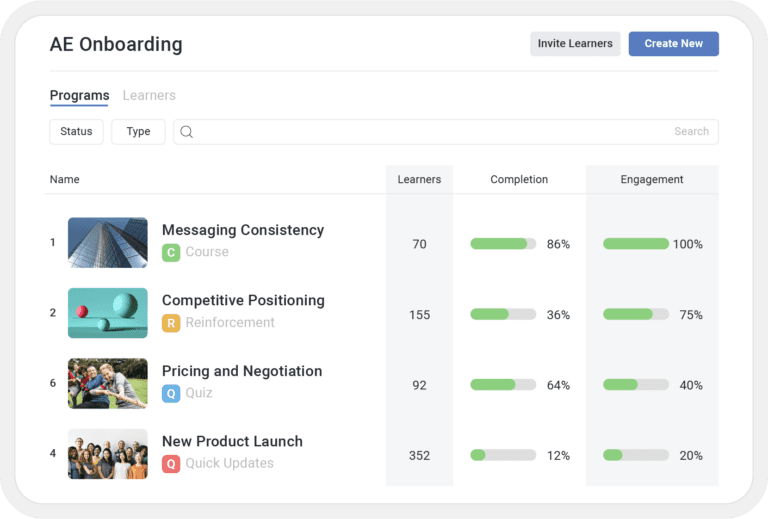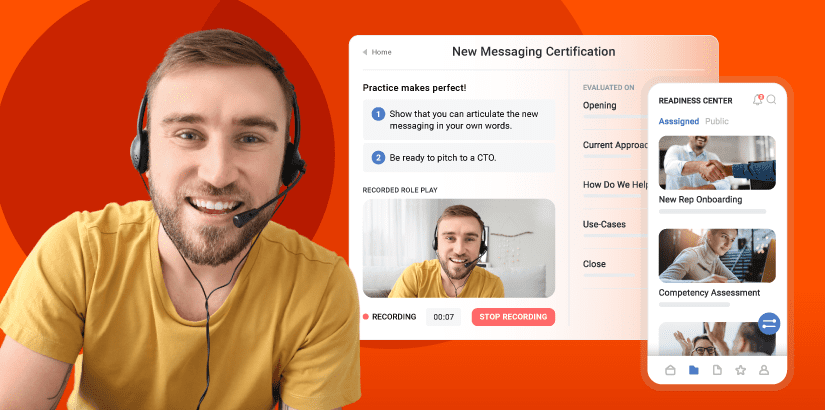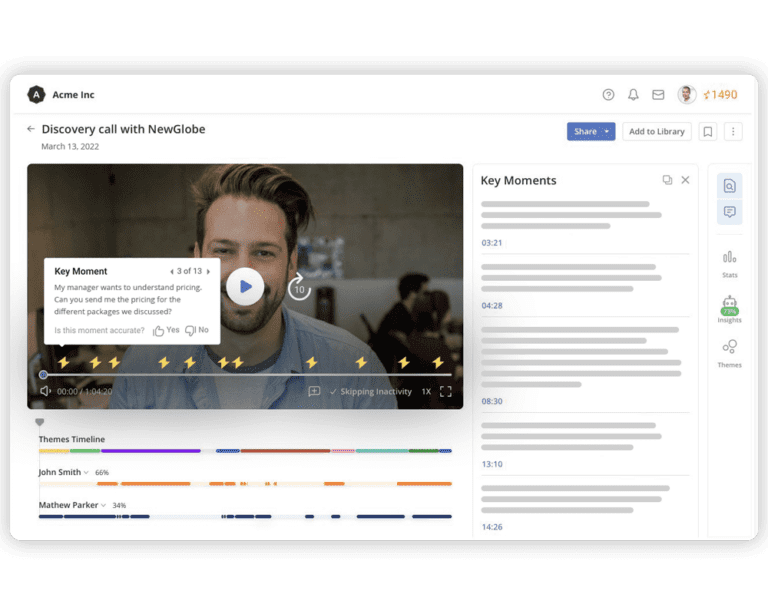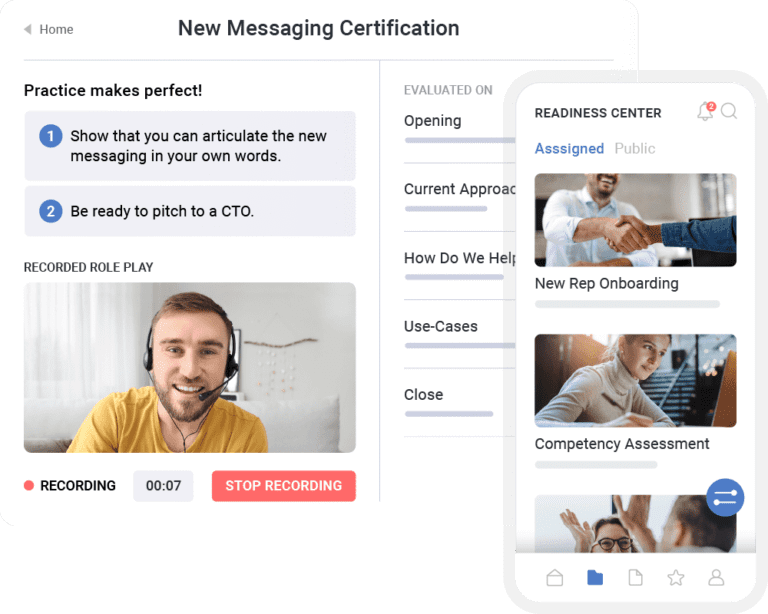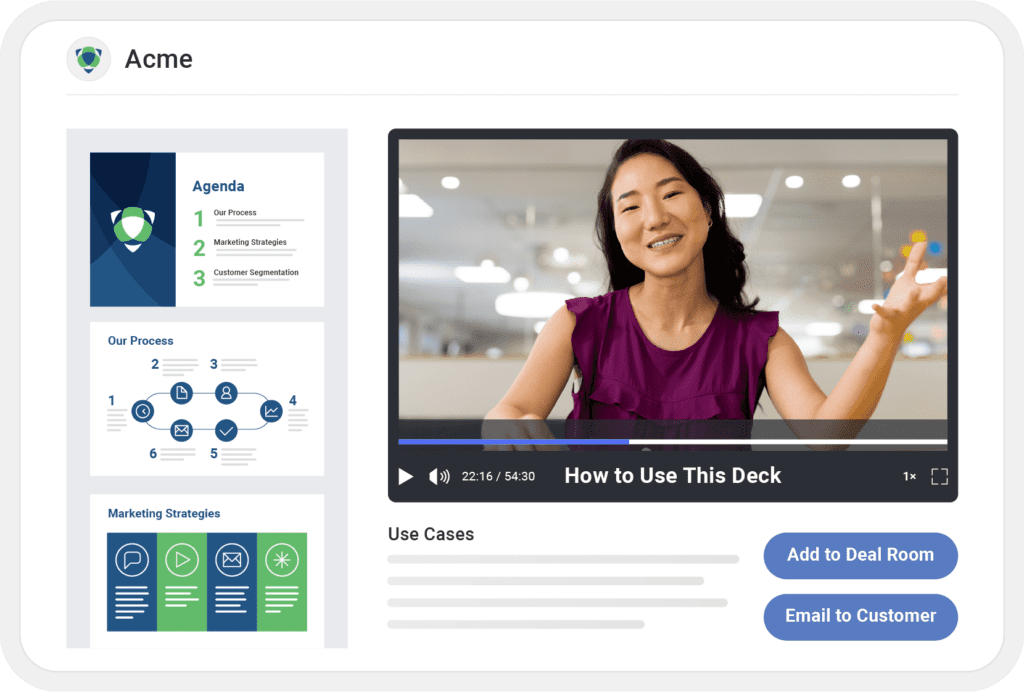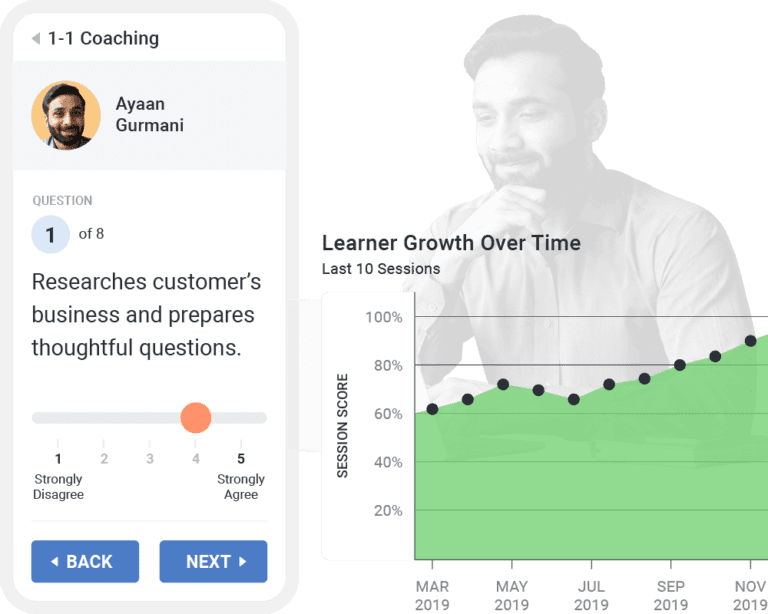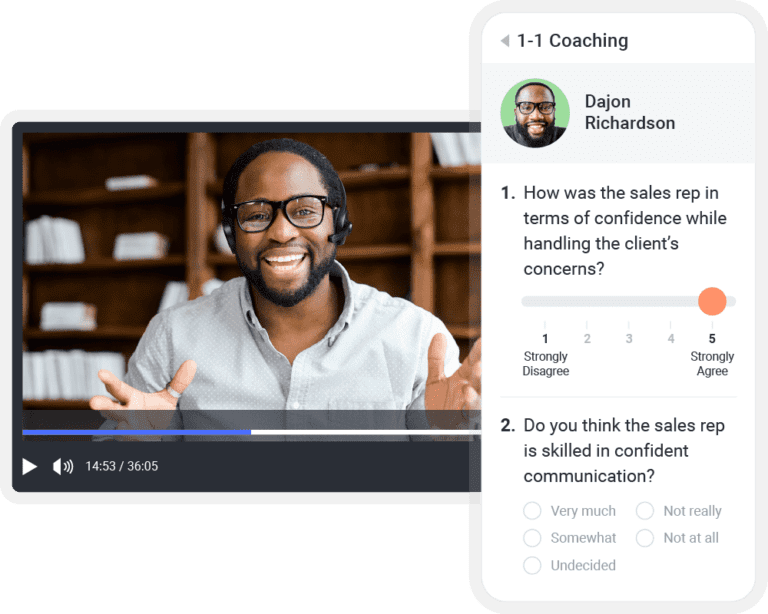10 Sales Coaching Tips and Techniques to Improve Sales
![]() Poornima Mohandas
on
April 26, 2024
Poornima Mohandas
on
April 26, 2024
Effective sales coaching can improve quota attainment by 21% and win rates by 19%. As it significantly impacts your team’s revenue generation, it’s essential to make time for coaching — even in your busiest periods like the end of the quarter.
Sales coaching can only be effective if you know how to coach your reps. Sales managers are busy, meaning companies must provide the tools, training, and resources to help them deliver effective sales coaches without requiring much prep time.
1. Provide regular training for your sales coaches
At many companies, sales managers are often top-performing reps who get promoted into managerial roles. These new leaders know how to sell but have less experience managing a team or leading their reps.
As a result, their coaching efforts are unfocused and less effective than they could be. So, it’s essential to train your sales managers. You need to help them develop their coaching skills so they know how to mentor, teach, and encourage the sellers on their team.
Sales manager coaching shouldn’t be a one-off activity. Instead, it should be an essential part of your onboarding process for sales leaders hired into the organization and reps who have been promoted into leadership roles.
Run sales manager coaching at least a couple of times a year to help sales leaders remember best practices and learn from each other. Add coaching sessions into your annual sales and midyear kick-offs so that managers benefit from coaching sessions at least every six months.
2. Don’t coach at random
Random sales coaching means you have no formal plan, structure, or cadence to your coaching sessions. It’s ad-hoc and sporadic, so it’s difficult for sellers to see the benefits from each session.
Unsurprisingly, ad-hoc sales coaching is far less effective than formalized coaching which happens on a regular basis. Research shows that dynamic coaching (purposeful, formally implemented, and tailored to the needs of your reps) makes a significant difference in sales outcomes. Compared to random coaching, dynamic coaching brings a 27.9% improvement in quota attainment and 32.1% in win rates.
Providing regular coaching for your sales reps can feel overwhelming and like it will be a significant time commitment for everyone involved. But sales coaching doesn’t need to be separate from other meetings and conversations you have with your sellers.
Make it part of your recurring 1:1 meetings so your reps receive coaching interactions regularly. That way, you can help your salespeople make incremental improvements over time rather than trying to make big changes less frequently.
There are many different sales coaching techniques and approaches, but we’ve found the GROW model to be effective and flexible for teams of different sizes. This format is a helpful starting point if you’re not sure how to kick off your coaching conversations:
- Goal — What are they working toward? What’s their target and what are they hoping to achieve?
- Reality — What does their current situation look like?
- Options and obstacles — What options do they have to overcome the obstacles between them and their goal?
- Way forward — What are the specific next steps they can take to work toward their goal?
3. Understand your reps’ current skill levels
You can’t help your reps develop their skills if you don’t have a current idea of their proficiency levels across each of your core competencies.
Before each coaching session, review their skill levels against your benchmarks to see their strengths and areas where they struggle. This will help you identify topics that offer the biggest opportunities for improvement for individual reps so that you can focus on these as your top priority.
Compare your reps’ performance against the benchmarks and expectations you’ve defined in your IRP. This data can come from multiple sources, such as:
- Self-assessments of reps against each competency, so you know how they feel about their performance and current capabilities.
- Scores from training exercises such as quizzes and virtual role-plays and identify the topics where they perform better or worse than average.
- Call recordings and other interactions with prospects to see their sales skills in action.
Mindtickle’s revenue productivity platform brings all of these insights in one place to determine the readiness of your teams. You can learn more about our Sales Readiness Index here.
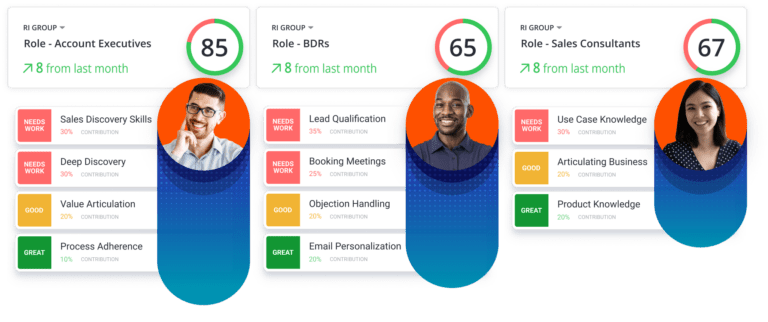
4. Focus on one thing at a time
One of the big temptations with sales coaching is to try and improve everything, all at once. But the most effective coaches focus on improving one skill or competency at a time rather than trying to change everything. If you try and change too many things at once, you’ll overwhelm the rep and will likely see smaller improvements as they have to remember too many new things at the same time.
Help your sellers make targeted improvements in their skill set by prioritizing areas where they’re weakest. By focusing on one skill at a time, your reps have a chance to improve and master that skill before trying to make changes in other parts of their sales process.
Use data from your sales tools to track how your reps are improving over time, to assess when they’ve mastered a core competency and are ready to focus on a different skill.
Mindtickle provides detailed analytics and reports so you can see how reps’ skill levels change and improve. Our sales readiness index helps you set benchmarks for the skill levels of top-performing sales reps and tracks your sellers’ progress against those benchmarks. Learn more about our sales enablement analytics and reports here.
5. Don’t coach everyone the same way
Your sellers all have different strengths and weaknesses. For example, some may excel at negotiation conversations, while others are better at discovery calls.
If you coach all your reps on the same topic, you’ll be spending lots of valuable coaching time helping some of them develop the skills they already have. At best, it’ll be a waste of both your time. At worst, they’ll switch off and disengage with your coaching, damaging the trust and relationship between you and your sales rep.
Taking a one-size-fits-all approach to sales coaching may give you small gains across your sales team. However, you’ll see bigger improvements if you tailor your coaching initiatives to your reps’ individual needs, taking each person’s strengths and weaknesses into consideration.
Creating a personalized coaching plan for your sellers can be a lot of work if you do it all manually. A sales readiness platform gives you the tools to automate much of the scoring, analysis, and planning so you can focus on delivering high-quality, tailored coaching instead of analyzing rep calls and touchpoints.
6. Coach skills, not just deals
When you think of sales coaching, you probably think of targeted conversations to help sellers navigate the specific issues they’re experiencing that may stop them from closing their current deals. But if all your coaching conversations are about their pipeline, you only focus on the short term.
Instead, you should add skills coaching to your conversations. This type of coaching will set your reps up for long-term success by helping them strengthen their core skills and develop the competencies that will help them progress in their roles.
Learn more about the difference between deal and skill coaching.
Our research found that only 24% of sellers receive coaching on skills. But sales managers whose teams consistently exceed quota provide skills coaching monthly (or more frequently if they notice a drop in performance in a specific area.)
Depending on your preferences, you might run one specific session per month on skills coaching. Alternatively, you could incorporate skills coaching into your weekly 1:1s. Start each meeting by discussing any areas reps feel like they’ve been struggling with recently so you can help them improve by giving them relevant follow-up training exercises to work through. Then you can discuss their pipeline and specific deals where they may be facing obstacles. Aim for a 50/50 split, so you’re dedicating enough time to each part of the conversation.
7. Use real examples to make learning tangible
Your coaching will be much more accessible to your sellers if you can use real-life examples to illustrate the topic. Instead of using vague, abstract scenarios, you can discuss your sellers’ skills in the context of a real sales scenario. Sharing real examples from your reps will make it easier for them to understand where they’re doing well and where they can improve.
Using a conversation intelligence product that records and transcribes your sales calls gives you access to a wealth of recordings to use for coaching. Not only can you analyze where a seller may need to improve on certain skills, but you can also highlight what good looks like by showcasing snippets of top call moments in coaching sessions. Giving sellers concrete examples of skills in action helps them replicate and practice themselves.
8. Reinforce coaching with related training activities
Coaching is an ongoing process that helps sales professionals develop and strengthen their skills over time. You’ll need to continually reinforce the concepts and ideas you cover to help reps retain that information and gradually improve their skills.
Follow-ups are an important part of the coaching process. Assign training exercises after coaching conversations to keep reps thinking about their ongoing personal development.
Our research shows that top managers are 3X more likely to assign follow-up activities after their coaching sessions, such as sales training exercises or content to review. Work with your sales enablement team to identify suitable follow-up activities such as:
- Knowledge checks
- Virtual role plays
- Training courses
- Product content
These exercises should relate to the topics you covered in your coaching sessions to reinforce the ideas and help reps retain the information you shared.
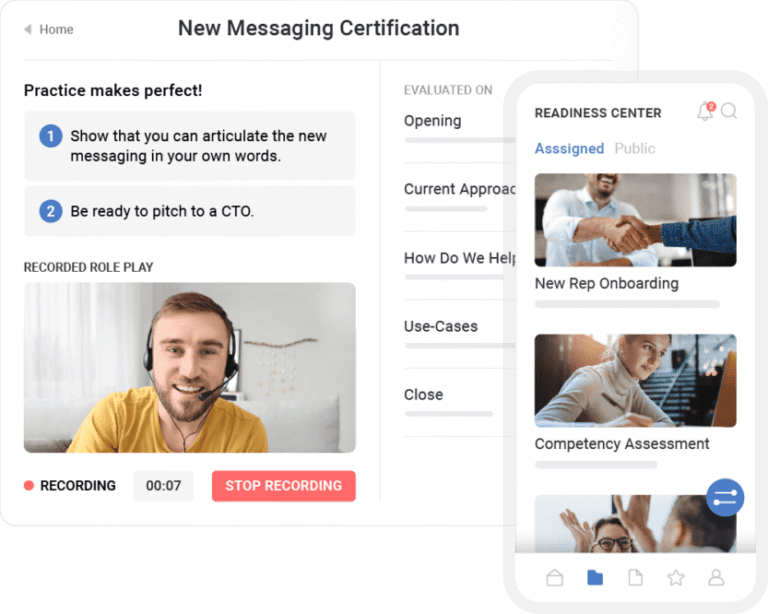
9. Sales managers aren’t the only coaches in the sales team
Nearly a half — 47% — of sales managers say that lack of time is the biggest obstacle to providing sales coaching due to the number of reps they manage. If you’re running a big team, finding enough time in the week to provide coaching and guidance to all of your salespeople can be difficult.
Regular sales coaching shouldn’t be the sole responsibility of team leads or sales managers. Instead, empower your team to support and help each other so you don’t have to do all the coaching.
Manager-led coaching is just one type of sales coaching. There’s also peer-to-peer coaching, where reps coach and support each other. For example, if you have one seller who excels at negotiation conversations, they can share tips and best practices with the other reps on your team.
Additionally, your reps should complete self-coaching to understand their own skill levels, strengths, and weaknesses. They can do this by reviewing call recordings and completing virtual role plays to assess their performance and identify improvement areas.
10. Track performance over time instead of looking for quick wins
Sales coaching aims to help your sellers develop over time to build the skills and competencies needed to progress in their careers. While your deals coaching will immediately help your sellers, skills coaching offers longer-term benefits.
Compare your reps’ skill sets against your ideal rep profile and set target skill levels to work toward in the next three, six, and twelve months. That way, you can see where you expect your rep to be in a year, giving them a long-term view of their personal development.
Support your reps to create long-term goals, for example, by helping them understand the skills they’ll need in order to progress from a business development role to an account executive one or a sales leadership position.
Four benefits of sales coaching
Sales coaching helps your sellers develop the skills they need to be successful. It also offers several benefits to the wider business.
Increases employee retention
Effective coaching can affect employee retention in your sales team by reducing involuntary turnover. With dynamic, regular coaching, reps are likelier to hit their quota and achieve their performance targets. As a result, you’re less likely to have to let them go due to unsatisfactory performance.
Additionally, it can help reduce voluntary turnover, where reps leave because they’ve found a new role elsewhere. Gallup found that the relationship between managers and their team plays a crucial role in employee engagement and satisfaction. Managers “must be upskilled from boss to coach so that they can have honest, meaningful, developmental conversations with their team members.”
If reps feel like their managers are invested in their growth and personal development, they’re more likely to engage with their work and have higher satisfaction levels — and they’ll be less likely to look for other opportunities elsewhere.
Strengthens sales leadership
Coaching is a skill you develop over time. It requires different skills and knowledge from being a sales rep, so if your organization has a culture of promoting from within, you may have multiple sales leaders who struggle with these skills.
Training your sales leaders is essential for turning them into great sales coaches. By coaching the coaches, you help your sales managers acquire the skills they need to motivate, manage, and develop their teams. As a result, managers can deliver a more effective sales coaching program and make a bigger impact on their team’s performance.
Improves sales performance across the team
Effective sales coaching should help all your reps improve their skill set — not just your high performers. This is because you provide tailored, personalized coaching to all team members so that everyone can make improvements in their weakest areas.
As a result, you should see increased performance scores for all your reps, as they can all focus on strengthening their core skills. Rather than having the top 20% of your reps generate 80% of the revenue, expect to see the rest of your reps raise their performances to the standards set by your top sellers. With a strong coaching culture, sellers learn from each other and can make targeted improvements to enhance their overall skills and competencies.
Increases revenue growth
The most important benefit you’ll get from sales coaching is revenue growth. As we’ve seen, dynamic sales coaching makes reps more likely to hit their quota and improve close rates. Coaching makes your sellers better at their jobs and can help turn all your salespeople into top performers.
Put simply, sales coaching improves your sellers’ ability to close deals, which can deliver a tangible boost to your company’s bottom line.
A revenue productivity platform makes running effective coaching sessions for your sellers simple
Providing data-informed, strategic, dynamic sales coaching can be challenging, especially if you manage a large team. A revenue productivity platform can help by automating much of the manual work, like reviewing sales calls and training exercises. With the right platform in place, you can spend more time coaching and supporting your reps and less time on the admin work that goes with it.
Create a Sales Coaching Culture
See how Mindtickle can accelerate and scale an your sales coaching program.
Get a DemoThis post was originally published in August 2022, updated in July 2023, and again in April 2024.



